Frequently Asked Questions Regarding Dissidia Final Fantasy – An Analysis by Squall_of_SeeD & Makoeyes987
by Makoeyes987 October 23, 2009 0 commentsAs if it weren’t apparent from our site’s coverage, Dissidia: Final Fantasy is a game that’s very close to my heart. And as it turns out, it’s a game that’s very close to Squall_of_SeeD’s heart too.
So it was only natural that the two of us would geek out and combine our resources and compile a FAQ of the most commonly asked questions regarding the game that celebrates Final Fantasy’s 20th Anniversary. Below you’ll find this site exclusive FAQ, the fruit of our research and understanding. Enjoy, and hopefully it’ll allow you to further enjoy the game and it’s storyline!
*Q: What are the Crystals in Dissidia Final Fantasy?
The crystals are the embodiment of the harmonious power wielded by Cosmos, the Goddess of Harmony. They allowed the heroes to exist within the world of Dissidia, even when Cosmos herself was killed by Chaos.
Cosmos surrendered her power to the heroes, in order to fully put an end to the cycle of conflict. By giving them her power to fully defeat Chaos and give him a true death, she hoped to finally end the endless cycle of battle, and restore the universe’s order.
Each crystal could only manifest to a hero, when their strength and resolve was at its peak while facing off against their respective opponent. By obtaining a crystal, the hero proved themselves worthy of wielding a portion of Cosmos’s power.
The shape and appearance a crystal took for each character, referenced a particular type of crystal from their originating story.
*Q: What was Emperor Mateus’s plan in Dissidia?
The Emperor’s original plan was to use Jecht, who had been a warrior of Cosmos, as the means to ensure his own survival once Chaos eradicated everything.
Though he was brought over to Chaos’ side, Jecht still had a bond with Cosmos and the light, and, thus, when he fought Tidus, both of them received a crystal. However, the Emperor captured the light of Jecht’s crystal for himself.
Due to Jecht’s allegiance with Chaos and his unwilling connection to darkness, the Emperor was able to use the crystal he created from that light for the same purpose as the crystals Cosmos had left with the heroes — to preserve himself after the death of the god whose side he fought upon, Chaos. Basically, by using the dark crystal Jecht’s bond with Tidus created, he was able to ensure that should Chaos disappear, he would still exist and be able to re-shape the universe as he saw fit, becoming the new god himself.
*Q: What were Sephiroth’s intentions in Dissidia?
The villains of Dissidia each held a personal goal that allowed them to overcome their differences in order to enact their plan to ensure Cosmos’s demise. One schemed the world’s return to the Void, while another wished its ultimate destruction, while others intended to survive the conflict’s end and fashion a new world with themselves as its sole ruler. But one particular villain’s goal was opaque compared to the rest…what were Sephiroth’s intentions within Dissidia? Did they go beyond merely settling his grudge against Cloud?
In Destiny Odyssey scene 50, Emperor Mateus and Ultimecia approach Sephiroth, hopeful in persuading him to join their plan in fashioning the demise of the gods. Sephiroth rebuffs their invitation and walks off. However, as seen in Cloud’s Destiny Odyssey, he clearly participates in Cloud obtaining his crystal, and goes so far to state that he led him to it… as if he intended and desired for Cloud to achieve his goal in the first place. Why would Sephiroth purposefully go forward with the Emperor’s plan of guiding the heroes to their individual crystals, after clearly stating he was not interested?
Sephiroth’s true intentions lie within his desire to be free of the conflict of the gods and allowed back to his originating world, so that he can continue to be the master of his own destiny. As stated in Destiny Odyssey II-7, Sephiroth sees the members of the conflict as “Mere puppets who cannot see their own strings.” In the previous cycle of conflict between the gods, Sephiroth was not content merely playing his role as an emissary of discord. At the end of the previous cycle, Sephiroth ended his own life to see what truth lied in a world he felt was full of illusions.
At some point, he became aware of the cyclical nature of the conflict, and believed that despite his death, he would return again. As shown in Shade Impulse Chapter 3-2, Sephiroth did not fear his demise, believing that the spirit would live on as spirit energy, instead of merely vanishing. A metaphysical perspective that is consistent with the world he originated from.
In the end, he realized that for him to truly be free to control his own destiny (and the destiny of others in his originating world), the heroes had to succeed in eliminating Chaos. Sephiroth coyly discusses with Garland, what fate would befall each of the worlds should Chaos truly be defeated, hinting at his desire for reality to return to what it once was. For that reason, Sephiroth played his part in Emperor Mateus’s plan while simultaneously allowing Chaos’s own forces to deliberately sabotage themselves.
In Destiny Odyssey scene 32, Sephiroth is shown to be aware of Golbez’s betrayal to Mateus’s plan. However, he remained quiet on the subject so that Golbez could continue allying himself with the heroes and working against his fellow warriors of Chaos. All this was done, so that he could be allowed to return home. After all, Sephiroth had his own personal plan to ensure his immortality and godhood…Geostigma.
In his final confrontation with Cloud in Shade Impulse, upon his defeat, Sephiroth ominously references his intent to face Cloud once more. Explicit references are made to his plan to use Cloud as a way of ensuring his return once again, as expressed in the Lifestream Black novella, where he states:
As long as Cloud remembers me, I can continue to exist. Within the Lifestream, and on the surface. Even if my spirit disseminates, even if just one fragment of a memory courses around the planet, in the end I can count on Cloud’s consciousness to bring me back…
In the end, Sephiroth’s true intent and desire in Dissidia was the fulfillment of his own ambitions. This included Chaos’s defeat and the success of the heroes so that he could return to the Gaia of FFVII, and enact his own plan to ensure his resurrection and the completion of his original goal of godhood.
*Q: Why do some of the villains remember the previous turn of the cycle, but others do not? Also, none of the heroes do. Why?
Retaining one’s memories from a previous turn of the cycle to the next seems to be dependent on being “wrapped in some strong emotion” (per Chaos Report #6) and being alive at the time of the new turn’s beginning. Thus, the heroes — who lost the time before — would have never remembered the previous turns of the cycle before. Sephiroth — who killed himself at the end of the previous turn of the cycle — did not remember things until very late in Shade Impulse.
*Q:Why did Chaos have a dream about governing the world alongside Cosmos?
In the distant past, Chaos was a god who ruled along side Cosmos, and suppressed discord, destroying only when it was necessary. However, as shown in Chaos Report 1, the Lufenians wanted to fully utilize and control the power of discord for themselves, and thus, removed Chaos’s memories of his purpose, and made him the total destroyer we see him as in Dissidia and FF1. The creation of Garland was apparently the result of Chaos losing his memories. Given the Final Fantasy theme of memories as life and power, it is likely that the memories extracted from Chaos themselves became the being known as Garland.
*Q: Who is Garland really?
Garland is the manufactured being talked about in the Cosmos and Chaos Reports who had control over the ethereal discord and was used as a tool of war for the Lufenians. He’s likely the “new being” created by the Lufenians when they wiped Chaos’s memory — the “one of harmony that could subdue and control discord.”
*Q: Who is Warrior of Light really? And what is his past?
The past and identity of Warrior of Light is truly a mystery. Even to himself. As stated by himself, he has no memory of his past, his name, or where he even is supposed to go.
The Guiding Light accessory, which is necessary to create Warrior of Light’s final exclusive weapon, gives a telling message to presumably, Warrior of Light himself:
Lukahn prophesized: a nameless warrior guided by the light will purge the chaos from the world.
So whoever the Warrior of Light is, is a purposeful enduring mystery within the scenario of Final Fantasy and Dissidia Final Fantasy.
*Q: What is the sword the Warrior of Light uses in Dissidia?
The heroes of Dissidia each carry and wield their iconic weapons from their respective stories. Cloud wields the Buster Sword, Squall wields his Revolver gunblade, Zidane uses two Mage Mashers, Firion wields the Blood Sword, etc. But what of the Warrior of Light? He has no iconic weapon from his previous game in Dissidia.
…Or does he?
Here is a screenshot from the PSP 20th Anniversary edition of Final Fantasy, showing the Warrior of Light wielding the sword Excalibur.
The sword the Warrior of Light is wielding in Dissidia appears to be the Excalibur from Final Fantasy. The designs of the weapon in both games are extremely similar.
*Q: What are the weapons used by the Onion Knight in Dissidia?
As with the Warrior of Light, the Onion Knight of Final Fantasy III did not have an iconic weapon from his original game. The two swords the Onion Knight uses in Dissidia are from the Amano cover illustration from Japanese boxart for the game.
But do these swords appear anywhere in Final Fantasy III? I’d say yes… At least, in the DS remake.
Two swords that appear in Final Fantasy III for the DS resemble the yellow and red weapons from Amano’s artwork of the nameless Warrior of Light on FFIII’s cover.
The yellow sword held by Onion Knight Luneth is the Ragnarok. The red sword held by Ninja Arc is the Muramasa. And the staff held by Sage Ingus is the Elder Staff. The colors and blade shape of both swords strongly resemble the stylized weapons Onion Knight wields in Dissidia.
What’s also interesting is that the Muramasa is a Ninja and Dark Knight exclusive weapon. Furthermore, the Muramasa is only awarded by the Legendary Swordsmith in FFIII DS when the Ninja job class is mastered. The fact that Onion Knight only wields this sword when class changing to a Ninja seems to further cement that this is the sword’s true name.
In regard to the Sage’s staff in Dissidia, the staff held by Sage Ingus is the Elder Staff, and bears a slight resemblance in terms of its shape to said staff used by Onion Knight in Dissidia. However, the strongest matches in terms of weaponry lie with the Ragnarok and Muramasa weapons.
*Q: Who is the “Great Will?”
In a metatextual capacity, the player is identified as the Great Will at the end of Inward Chaos. As far as the story itself goes, however, Cid of the Lufaine is confirmed as the Great Will in the Chaos Reports, specifically Chaos Report #10. Earlier hints to this came from Garland telling Chaos that he had guided him “in accordance to the Great Will’s wish,” while Chaos Report #4 had Cid mention that he’d gotten Garland to agree to “stand at the right hand of discord.” As well, both Shinryu’s profile in the Museum and Shinryu’s brief dialogue with Chaos near the end of Shade Impulse makes it clear that he had been assigned a task by the Great Will. In Chaos Report #3, Cid mentions that he’d made a pact with “a certain dragon wandering through space and time” (Shinryu).
*Q: For what purpose was Cid trying to turn Chaos into the “ultimate weapon?”
To get revenge on the world for what happened to himself and his wife as revealed by her in the Cosmos Reports. The reason the cycle was necessary was because Cid wanted an absolute ending — the destruction of all reality. He needed Chaos — “the ultimate weapon” — to do this. But Chaos winning the war wouldn’t alone achieve this. Cid had to get rid of Cosmos for good so that Chaos would despair and destroy himself.
To deliver an absolute death to the gods, they had to choose to die. Cosmos had to kill herself by dividing her power into the 10 crystals. Once she was actually dead, Chaos would feel despair and decide to end his own life, along with the universe.
*Q:How is Cosmos alive during the Secret Ending?
The defeat of Chaos returned all that was lost from the discord he controlled. Presumably, this included Cosmos, and because of that, harmony was allowed to once again take control and restore all that was lost. As Cid said in the Secret Ending of the game, there will be conflict as long as the world exists, for harmony and discord are concepts born of the human mind — so as long as there are people, there will also be the embodiments of those concepts, Cosmos and Chaos. Since Chaos failed to destroy the universe prior to his death, there was still life — and with everything lost to the discord then restored, so too was Cosmos. Which would then tie into the plot of FF1 being allowed to finally resolve.
Pages: 1 2

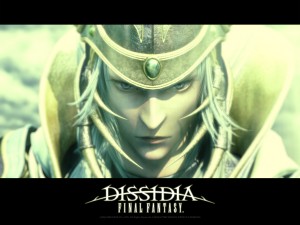


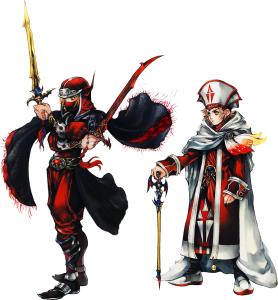

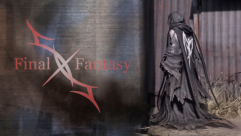
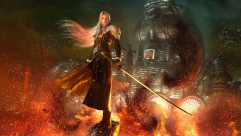
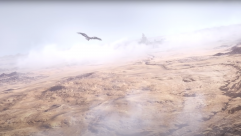

No comments yet
Log in or Register
Still not canon.
What a thought and well constructed rebuttal. Any particular reason why you’re in staunch opposition against the evidence here and in Duodecim 012?
Oh roflcopter.
Just gotta say: lolredundancy.
You’re seriously claiming a title that isn’t even out yet as evidence? Also, I fail to see how any of this is redundant.
“Duodecim 012” is redundant. It’s like saying, “Duodecim duodecim.”
Are you seriously being purposefully obtuse or are you just not in the know about all the creator commentary that specifically states Tifa, Yuna, and the others are from their respect FF worlds?
Or how Yuna has her memories of FFX, while Tidus, who is new to the conflict in Duodecim, does not remember her at all and thus is on the side of Chaos?
Get a clue before disproving evidence. And bring something substantial to the table as well.
TJF588: Oh yeah. I never noticed that before.
Makoeyes: Citations. Citations, nowhere.
So apparently you didn’t know.
Yeah, look at the Weekly Jump scan introducing Tifa.
And the recently translated interview from Famitsu. Emphasis on the portion about Yuna and her memories.
The more you know.
I think Onion Knight it’s the best
So…this thing ever going to get revised, considering that 012 contradicts it several times?
the part about garland is wrong, you see, garland is actually accidentally sucked into the cycle of the battle, as for the “harmonious force created to subdue..” is actually cosmos, cosmos was a mannequin created after cid’s wife or chaos’s mother, since cid’s wife was killed in the incident in world A, chaos only follow the word of cosmos, but because of the agreement between cid(great will) and shinryu, garland was used to convince chaos to start an endless cycle until the end of time where they will finally find a way out.